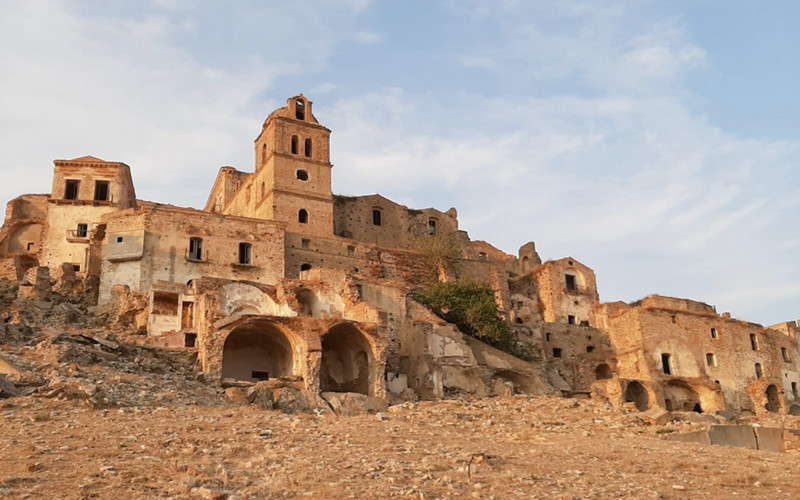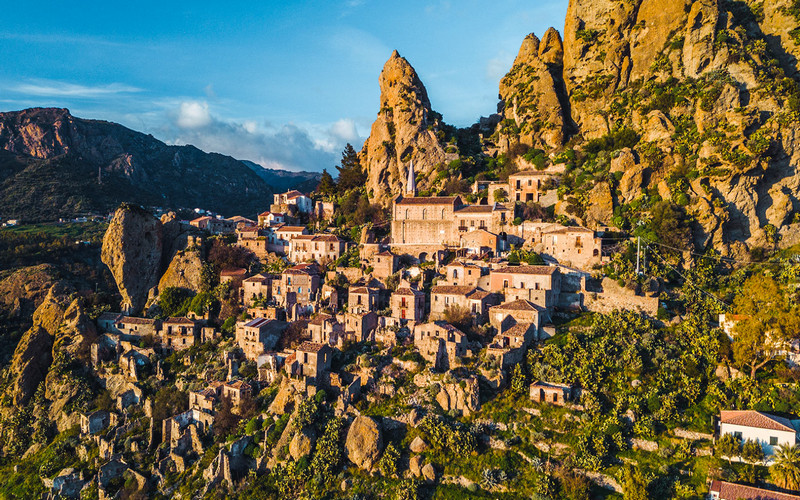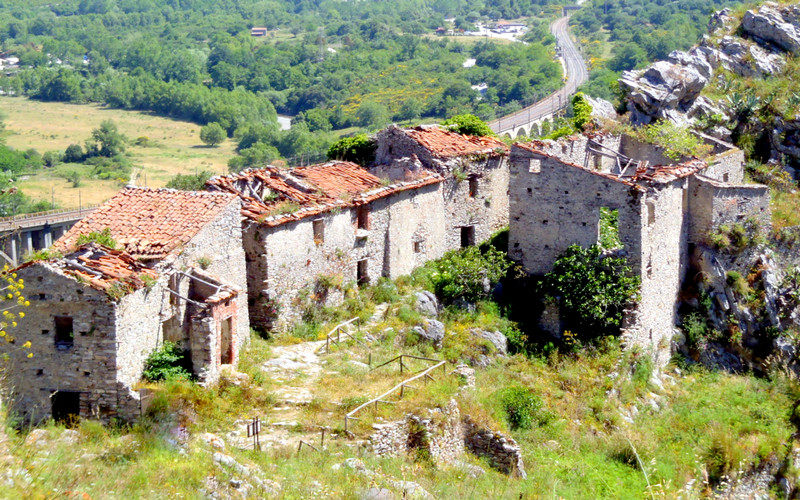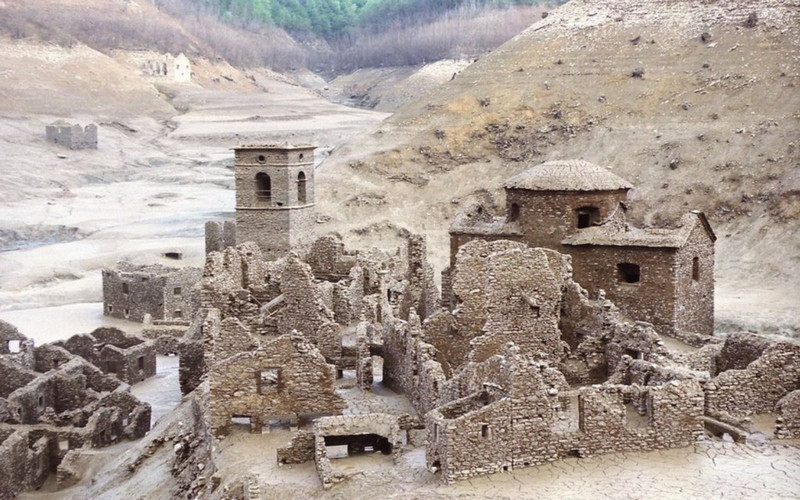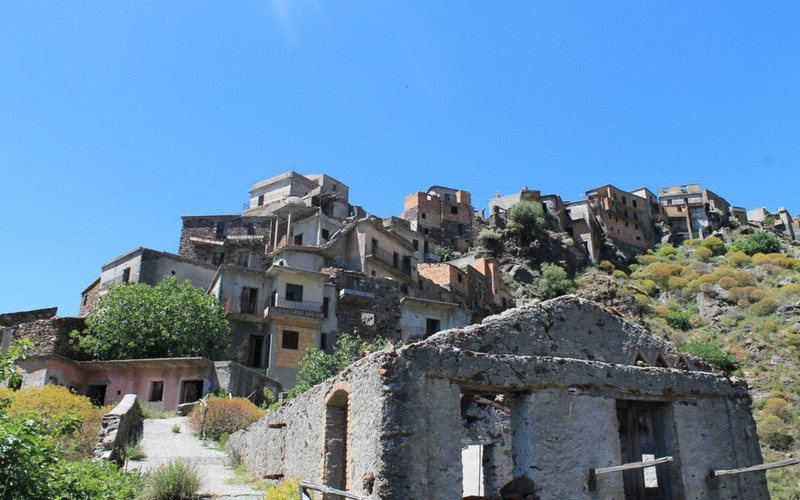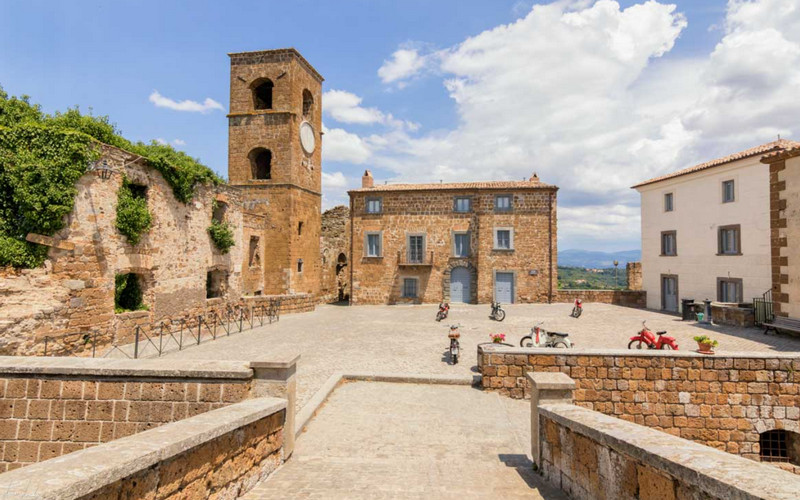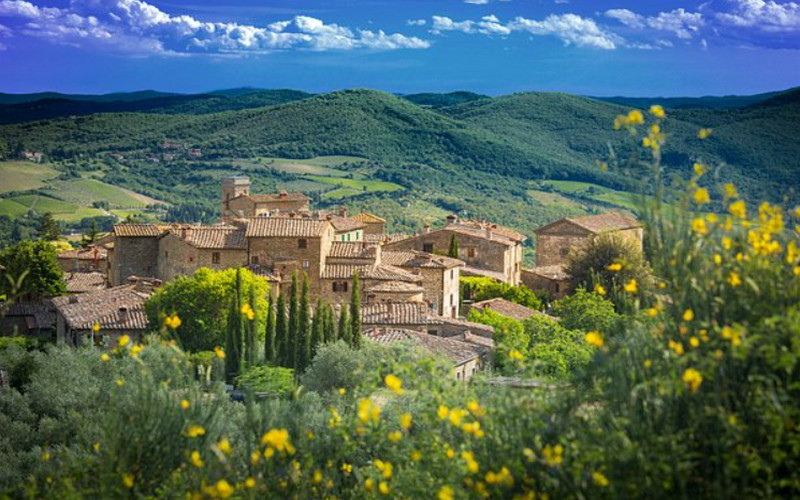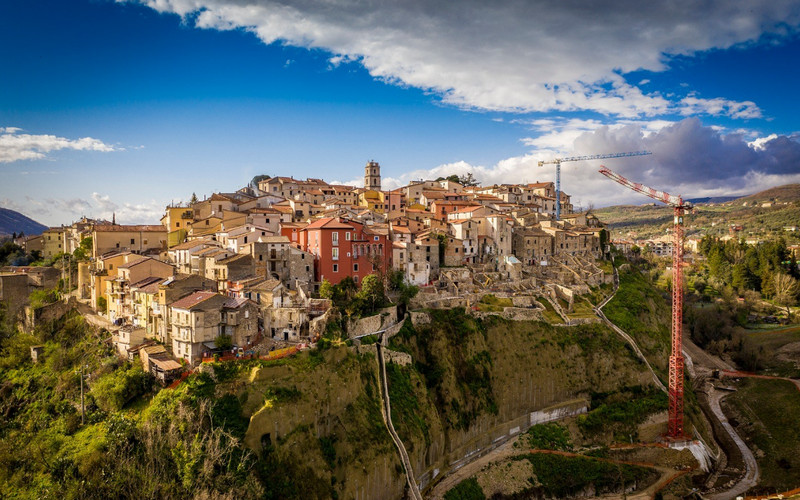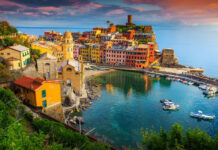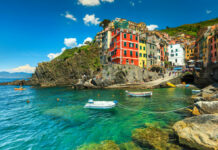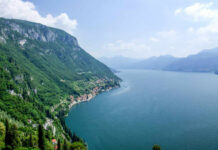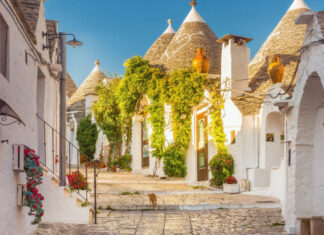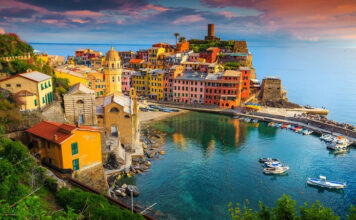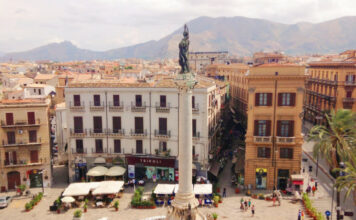Italy is a land of timeless beauty—Renaissance cities, sun-drenched coastlines, and lively piazzas. But hidden behind this postcard-perfect image is a darker, more mysterious side of the country: dozens of abandoned villages that stand in silent testimony to nature’s fury, shifting economies, and the slow unraveling of rural life. These ghost towns, once filled with bustling life and laughter, now offer a haunting cinematic allure. Their crumbling facades, empty churches, and ivy-choked staircases feel like scenes pulled straight from an art film, historical epic, or apocalyptic drama.
Here are 10 abandoned Italian villages that could easily serve as the set of your next favorite movie:
1. Craco (Basilicata) – The Undisputed Star of Italian Ghost Towns
Craco is perhaps the most iconic abandoned village in Italy. Situated atop a steep hill, it was founded in the 8th century and flourished in medieval times. But a series of landslides in the 1960s and an earthquake in 1980 forced its residents to evacuate.
Today, Craco’s skeletal ruins—towering stone buildings, a lone watchtower, and winding cobbled streets—are almost entirely intact. Time stands still here. The village’s eerie charm has made it a popular filming location for movies like The Passion of the Christ, Quantum of Solace, and Christ Stopped at Eboli. Wandering through Craco feels like navigating a dream sequence—solemn, surreal, and unforgettable.
2. Balestrino (Liguria) – Beauty Frozen in Ruin
Located inland from the Ligurian Riviera, Balestrino was abandoned in the 1950s due to geological instability. The “new” Balestrino sits just a kilometer away, but the original village has remained untouched.
Its pastel-hued houses with shuttered windows, half-collapsed churches, and sun-drenched alleyways are draped in silence. Balestrino offers a cinematic paradox—at once romantic and unsettling. The absence of people only amplifies its timeless beauty, making it a dream location for photographers and filmmakers.
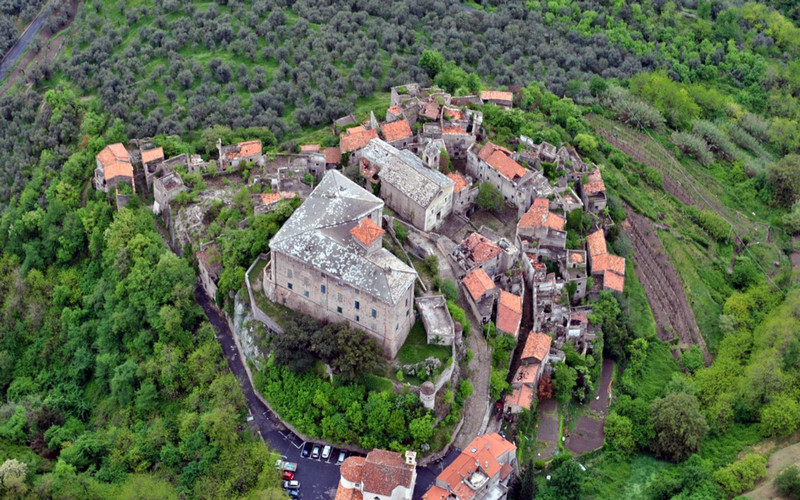
3. Pentedattilo (Calabria) – A Gothic Dreamscape
Founded in 640 BC by Greek settlers, Pentedattilo clings to a cliff beneath a rock formation shaped like a giant hand—hence its name, from the Greek pente daktylos (five fingers). The town was largely abandoned after a devastating earthquake in 1783.
Today, its narrow alleys, crumbling stairways, and ghostly stone homes seem to whisper old secrets. Pentedattilo has an eerie, almost supernatural feel—perfect for gothic tales, Greek tragedies, or haunting period pieces.
4. San Severino di Centola (Campania) – The Cliffside Remnant
San Severino di Centola, hidden in the rugged Cilento hills, looks like a medieval time capsule clinging to a cliffside. It was gradually abandoned after WWII as families sought modern amenities elsewhere.
With panoramic views of the Mingardo River valley, this village’s ruins—arched windows, balconies overgrown with vines, and a still-standing bell tower—feel like a set built for a romantic medieval tragedy. The air is heavy with nostalgia and silence.
5. Fabbriche di Careggine (Tuscany) – The Submerged Ghost
This 13th-century village near Lucca disappeared beneath the waters of Lake Vagli in 1947 after a dam was built. But every few decades, when the reservoir is drained for maintenance, the ghost town emerges like a phantom.
Stone houses, a church, and even cobbled streets reappear from the depths. The reemergence feels like a cinematic climax—a mythical city rising from the waters, surrounded by stunned spectators. The last reappearance was in 1994; another is anticipated in the coming years, making Fabbriche di Careggine a real-life fantasy scene.
6. Roghudi Vecchio (Calabria) – Italy’s Forgotten Fortress
Roghudi Vecchio is perched perilously on a rock outcrop in the Aspromonte Mountains. Repeated flooding and landslides forced its evacuation in the 1970s. Getting there today requires navigating narrow mountain paths, which adds to its dramatic aura.
The village appears as a fortress lost in the wilderness—its vacant houses and eerie silence making it feel like a set from a post-apocalyptic survival movie. It’s an evocative place where you can feel the weight of abandonment in the air.
7. Celleno Vecchio (Lazio) – The Artistic Resurrection
Celleno, once known as the “ghost village of Viterbo,” was abandoned due to landslides and structural damage. But in recent years, artists and volunteers have begun restoring its spirit—not with full redevelopment, but with curated decay.
The ruins have been turned into open-air installations, with theatrical displays and occasional performances, giving the town a poetic, surreal ambiance. It’s a place where Fellini might have set a dream sequence—somewhere between life and decay, fantasy and memory.
8. Castelnuovo dei Sabbioni (Tuscany) – Industrial Echoes
This village near Arezzo was built in the 19th century to house workers at nearby lignite mines. But by the 1960s, the mines closed and landslides made the area unsafe.
What’s left is a poignant contrast to the medieval ghost towns: a modern-era village swallowed by nature. Abandoned schools, broken windows, and rusting bicycles create a sense of stillness and urban nostalgia—reminiscent of scenes from Chernobyl or The Road.
9. Auletta (Campania) – The Earthquake’s Shadow
The old part of Auletta was severely damaged in the 1980 Irpinia earthquake and has remained partially deserted since. With cracked frescoes, decaying balconies, and silent courtyards, it evokes a ghostly tranquility.
Nature is slowly reclaiming the stone streets, offering a compelling cinematic juxtaposition: human ambition and resilience against the inevitability of decay. It’s a village best suited for introspective documentaries or postwar dramas.
10. Civita di Bagnoregio (Lazio) – The Dying Town
Though not entirely abandoned, Civita is often included in ghost town lists due to its precarious position atop eroding cliffs. Known as “la città che muore” (the dying town), it’s accessible only via a long pedestrian bridge.
Its fairy-tale beauty—stone arches, ancient churches, flower-lined paths—makes it a favorite for filmmakers. With mist rising from the valleys below and the wind whispering through empty homes, Civita feels like a magical realm caught between two worlds.
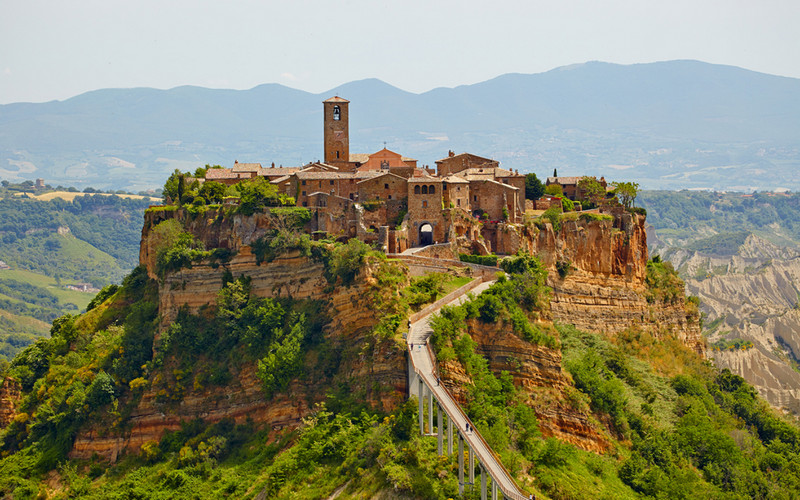
Cinema in Stone and Silence
What unites these villages is more than just abandonment. It’s atmosphere. Each place holds a lingering sense of memory—of lives paused mid-sentence. They exude emotion through their textures: the crumbling walls, creaking doors, and overgrown courtyards speak louder than words.
For travelers, these ghost villages offer a rare kind of beauty: haunting, cinematic, and oddly peaceful. For filmmakers, they are ready-made sets, steeped in authenticity, history, and visual poetry.
So the next time you think of Italy, don’t just picture Venice or Rome. Imagine Craco at dusk, Pentedattilo under the moonlight, or Fabbriche di Careggine rising from its watery grave—like scenes from a film the world forgot to watch.
